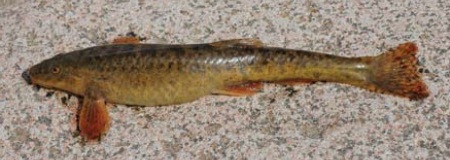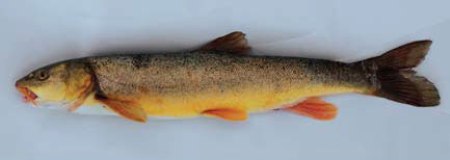Freshwater habitats are one of the most vulnerable elements of the biosphere. Currently, they suffer from pollution, construction of dams, use of large volumes of water for irrigation, industrial and domestic needs, as well as from poaching, uncontrolled fishing and increased recreational load.
The loss of species diversity in continental waters is much faster than in terrestrial or oceanic systems. At the same time, it is freshwater reservoirs that mostly determine the diversity of animal and plant population of terrestrial ecosystems.
The Altyn-Emel National Park is located on the right bank of the Ili River and covers several small rivers, a section of the Ili River itself and the Kapchagai reservoir.
The native ichthyofauna of the Ili River basin consisted of several species. As a result of the acclimatization of a large number of alien fish species and a radical change in the hydrological regime after the construction of the Kapchagai hydroelectric power station, fundamental changes occured in the fish fauna of the Ili River - all the largest reservoirs were inhabited exclusively by alien species of fish, the autochthonous species were pushed back into the tributaries.
In total, 13 autochthonous (native) fish species were found on the territory of the Altyn-Emel National Park and adjacent territories, 8 of them are listed in the Red Book of Kazakhstan (marked with an asterisk).
|
1 |
Short-Tailed Minnow* - Phoxinus brachyurus |
|
2 |
Common Minnow* - Phoxinus phoxinus |
|
3 |
Balkhash Minnow* - Rhynchocypris poljakowi |
|
4 |
Balkhash Marinka* - Schizothorax argentatus |
|
5 |
Ili Marinka* - Schizothorax pseudaksaiensis |
|
6 |
Scaly Osman - Diptychus maculatus |
|
7 |
Naked Osman - Gymnodiptychus dybowskii |
|
8 |
Tibetan Stone Loach - Triplophysa stoliczkai |
|
9 |
Severtzov's Stone Loach* - Nemacheilus sewerzowi |
|
10 |
Gray Stone Loach - Triplophysa dorsalis |
|
11 |
Spotted Stone Loach - Triplophysa strauchii |
|
12 |
Plain Stone Loach* - Triplophysa labiata |
|
13 |
Balkhash Perch* - Perca schrenkii |
During recent studies, such autochthonous species as the minnows, Balkhash marinka, Ili marinka, scaly osman, Severtsov's stone loach and Balkhash perch were not found on the territory of the national park, although it has necessary conditions for their existence. This points to the vulnerability of the freshwater ecosystem of the national park.
Such endemic species as the Ili marinka and Balkhash perch are threatened with complete extinction.
One of the most widespread native fish species in the waters of the Altyn-Emel Park is the naked osman.

Naked Osman - Gymnodiptychus dybowskii.

Scaly Osman - Diptychus maculatus.

Tibetan Stone Loach - Triplophysa stoliczkai.

Balkhash Marinka* - Schizothorax argentatus.




